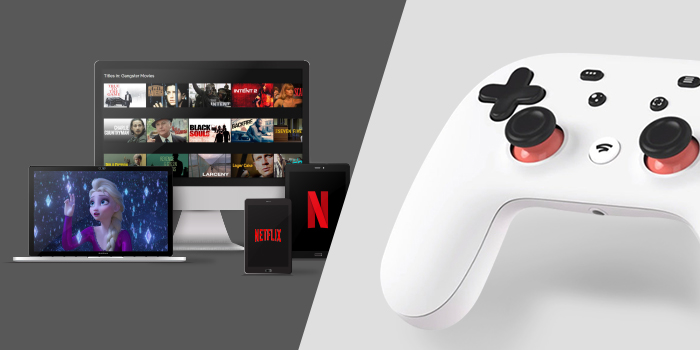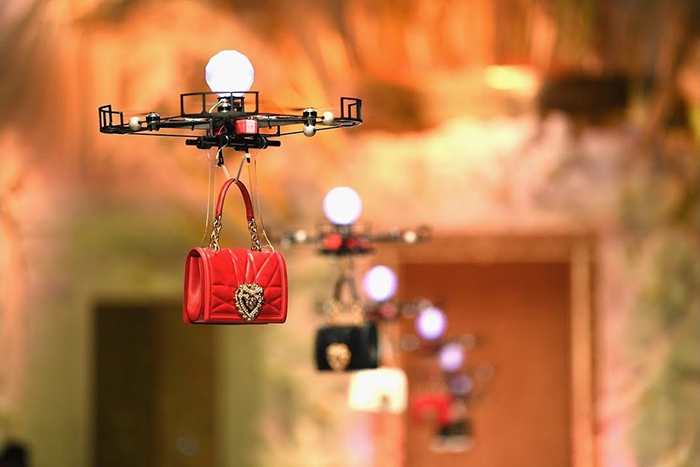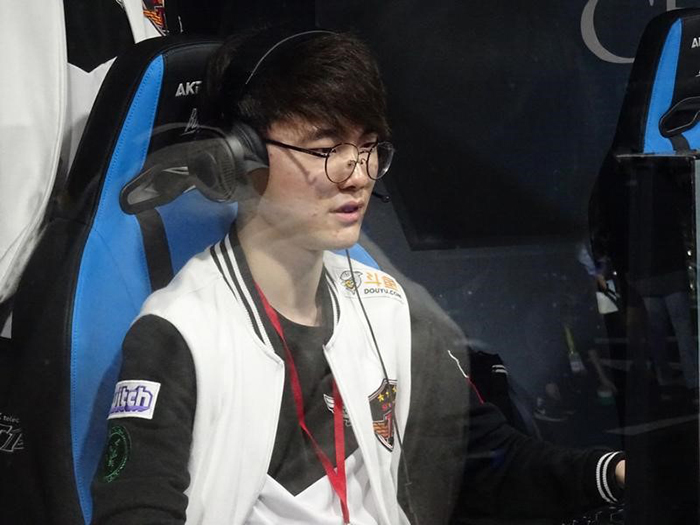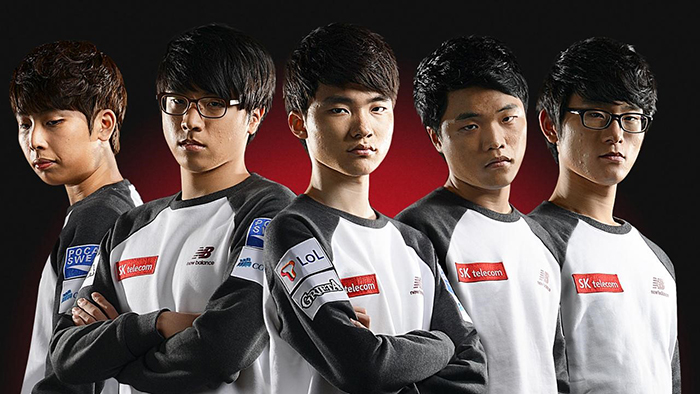[EIDETIC INSIGHT] Speaking to Consumers in a COVID-19 World
by Kenneth Nienhuser
With social distancing in full swing, many are stuck at home as everyone around the world is waiting out the pandemic. This has hit the economy in a severe way, with the global economy suffering a 12% contraction during the first quarter of 2020, according to JP Morgan. As a result, companies around the world are seeking methods to increase sales and reach audiences at home. Whether this be through the leverage of technology, meaningful marketing techniques, or a reassuring voice during this trying time, these brands stand out for their quick adaptations during the global pandemic.

Source : Volkswagen
Taking it Digital
With most major B2C events being canceled due to health and safety reasons, automotive brands had to transform their traditionally offline exhibits into digital premieres that would reach audiences across the globe from the comfort of their own homes. Volkswagen took this opportunity to create a unique, virtual, solution in response to the cancelation of the Geneva Motor Show, by creating their own virtual showroom. The Volkswagen virtual showroom allowed digital ‘visits’ of the VW exhibition floor, where several models were on display. Virtual attendees are able to navigate their way through the showroom floor, listening to presentations about the vehicle USPs or freely wander around. They are also able to customize the vehicles they view by selecting the model’s paint job and rims. With the delay or cancelation of other motor shows like NAIAS, the automotive industry is exploring new ways of reaching audiences, and it stands to reason that automotive brands will find more ways to leverage technology to reach customers digitally.

Source : NIKE
Marketing with Meaning
The current pandemic has also presented an opportunity for brands to present themselves in a more generous and socially conscious light. Meaningful marketing allows for brands to connect with their audiences by interconnecting their brand image with a campaign that benefits audiences. NIKE is no stranger to marketing with meaning, having taken stances behind social issues, like their 2018 Dream Crazy campaign featuring the controversial Colin Kaepernick, a prominent Black Lives Matter activist, as well as notable campaigns like their Find Your Greatness series that encouraged audiences to pursue their own paths to greatness, no matter how they viewed it. This time, the message is to stay home, not just for their sakes, but for the world’s, rallying behind the call to Play for the World. The campaign has been centered around providing support for those in isolation while encouraging those at home to stay active.
Nike’s Play Inside campaign offers access to their NTC Premium membership for free, further incentivizing athletes to help the world recover from the pandemic, and maintain social distancing by training indoors. Since starting their community workouts, the combined views on their community workouts page has surpassed 1.5 million views, with more audiences turning in every week.

Source : GUINNESS
Positivity Counts
COVID-19 has done a number on people’s worldviews, as many are finding themselves in low spirits due to the effects of the pandemic. This is why some brands have decided the best message they could send now is one of reassurance. Guinness has also sent out a message of reassurance, as the celebration of St. Patrick’s Day was understandably quelled due to the pandemic and the danger of social gatherings. Large parades that are iconic of the festivities will not be held this year for health and safety concerns. Thus, the brewing company released a video stating that “we’ll march again” to their audiences, signifying that there will always be another time to march for celebration, and that this pandemic will not be the end of good times, or tradition. The brand also announced its commitment to the Guinness Gives Back Fund of $1 million in support of its local community and hospitality workers who have fallen on economic hardship due to the global situation. While everyone maintains social distancing, hospitality workers are sore for business, and this support will surely not go unnoticed.
In essence, show you’re still there
Regardless of how your brand chooses to navigate these times, it is important to remind your audiences that you are still there, and that you’re speaking to them. It is easy for people to feel like they are alone in this, with isolation and social distancing in effect, so it is important, now more than ever, to speak to your consumer base, and let them know we are all in this together.

THERE WAS A PROBLEM WITH YOUR SUBMISSION.
Have you checked all the required fields?
We want you to write your Company, Name, E-mail, Budget, Country to Execute, Website URL, Wanted Services and Project Description.Thanks.
Category Archives: Insights
Speaking to Consumers in a COVID-19 World
April 29, 2020
[EIDETIC INSIGHT] Speaking to Consumers in a COVID-19 World
by Kenneth Nienhuser
With social distancing in full swing, many are stuck at home as everyone around the world is waiting out the pandemic. This has hit the economy in a severe way, with the global economy suffering a 12% contraction during the first quarter of 2020, according to JP Morgan. As a result, companies around the world are seeking methods to increase sales and reach audiences at home. Whether this be through the leverage of technology, meaningful marketing techniques, or a reassuring voice during this trying time, these brands stand out for their quick adaptations during the global pandemic.

Source : Volkswagen
Taking it Digital
With most major B2C events being canceled due to health and safety reasons, automotive brands had to transform their traditionally offline exhibits into digital premieres that would reach audiences across the globe from the comfort of their own homes. Volkswagen took this opportunity to create a unique, virtual, solution in response to the cancelation of the Geneva Motor Show, by creating their own virtual showroom. The Volkswagen virtual showroom allowed digital ‘visits’ of the VW exhibition floor, where several models were on display. Virtual attendees are able to navigate their way through the showroom floor, listening to presentations about the vehicle USPs or freely wander around. They are also able to customize the vehicles they view by selecting the model’s paint job and rims. With the delay or cancelation of other motor shows like NAIAS, the automotive industry is exploring new ways of reaching audiences, and it stands to reason that automotive brands will find more ways to leverage technology to reach customers digitally.

Source : NIKE
Marketing with Meaning
The current pandemic has also presented an opportunity for brands to present themselves in a more generous and socially conscious light. Meaningful marketing allows for brands to connect with their audiences by interconnecting their brand image with a campaign that benefits audiences. NIKE is no stranger to marketing with meaning, having taken stances behind social issues, like their 2018 Dream Crazy campaign featuring the controversial Colin Kaepernick, a prominent Black Lives Matter activist, as well as notable campaigns like their Find Your Greatness series that encouraged audiences to pursue their own paths to greatness, no matter how they viewed it. This time, the message is to stay home, not just for their sakes, but for the world’s, rallying behind the call to Play for the World. The campaign has been centered around providing support for those in isolation while encouraging those at home to stay active.
Nike’s Play Inside campaign offers access to their NTC Premium membership for free, further incentivizing athletes to help the world recover from the pandemic, and maintain social distancing by training indoors. Since starting their community workouts, the combined views on their community workouts page has surpassed 1.5 million views, with more audiences turning in every week.

Source : GUINNESS
Positivity Counts
COVID-19 has done a number on people’s worldviews, as many are finding themselves in low spirits due to the effects of the pandemic. This is why some brands have decided the best message they could send now is one of reassurance. Guinness has also sent out a message of reassurance, as the celebration of St. Patrick’s Day was understandably quelled due to the pandemic and the danger of social gatherings. Large parades that are iconic of the festivities will not be held this year for health and safety concerns. Thus, the brewing company released a video stating that “we’ll march again” to their audiences, signifying that there will always be another time to march for celebration, and that this pandemic will not be the end of good times, or tradition. The brand also announced its commitment to the Guinness Gives Back Fund of $1 million in support of its local community and hospitality workers who have fallen on economic hardship due to the global situation. While everyone maintains social distancing, hospitality workers are sore for business, and this support will surely not go unnoticed.
In essence, show you’re still there
Regardless of how your brand chooses to navigate these times, it is important to remind your audiences that you are still there, and that you’re speaking to them. It is easy for people to feel like they are alone in this, with isolation and social distancing in effect, so it is important, now more than ever, to speak to your consumer base, and let them know we are all in this together.
The Future is Human
February 10, 2020
[EIDETIC INSIGHT] The Future is Human
by Kenneth Nienhuser

Source : https://www.facebook.com/pg/neondotlife/posts/
The Future is Human
At CES 2020, AI was out in full force. From automobiles and home appliances to cities themselves, AI seems to be destined to become more integrated into our daily lives. As cold and calculated as that may seem, there was one San Francisco-based start-up at CES this year that wanted to show the more human side of AI with their new human-interface interactive technology. This year, I had the pleasure of visiting the booth of STAR Labs, an independently operated Samsung subsidiary, which has created the NEON, a “computationally created virtual being” that resembles an actual human being that is supposed to further bridge the gap between humans and the world of Artificial Intelligence.
NEON and the Brains Behind Them
STAR Labs began as a small team of brilliant researchers and scientists, led by their CEO Pranav Mistry, former senior vice president for Samsung Electronics. The goal is singular in focus: to create the next iteration of communication, and that iteration comes in the form of the “Artificial Human”, or as they’re officially called, the NEON.
At first glance, when talking to a NEON, it may appear that you are conversing with another voice assistant that just happens to look human on screen. However, STAR labs have created NEONs to not just be the next Siri or Alexa. NEONs aren’t designed to be your music player or weather checking assistant. They look and behave like another person, showing emotions, intelligence, and patterns of speech. Meaning they are meant to behave as our companions, confidantes, and even our collaborators. They learn and evolve with you, creating memories from past interactions, acting more as a close friend rather than a ‘know-it-all’ bot you can check the distance to the moon in giraffes with (which is 69,890,910 giraffes by the way).
NEONs are also not customizable. They resemble or are directly modeled after real people, and each have their own unique personality, complete with expressions, movements, and dialogs. This means that the focus will be placed on interaction through conversation, rather than more superficial aspects like clothing or body type. These new beings are meant to do what other voice assistants have failed to do before them, actively engage users.

Source : https://www.facebook.com/pg/neondotlife/posts/
Your Next Experiential Marketing Asset?
Though they are designed to be more personal in interaction, the NEON is not set to be sold for personal ownership any time soon. The business model for these companions is more of a subscription service, with businesses and organizations being able to lease their services for a variety of duties, like a translator, service representative, or concierge. When speaking with a representative from STAR Labs, the purpose of this ‘domain-specific’ deployment of NEONs was to make sure that they were not used for purposes beyond their intended use.
For experiential marketing, a deployable form of interactive assistance at booths and events sounds appealing. Being able to reduce the amount of manpower, and all costs that coincide with that, with an efficient, personable staff member that can act as a presenter, information desk attendant, or even product model is a prospect that is hard not to get excited about. And with NEONs being digital, a NEON could do presentations in an event in Shanghai in the morning in Shanghainese and then work a different exhibit in Los Angeles in English and Spanish later the same day. These advantages will surely help NEONs catch on once the technology becomes available.
Still in the Works
For now, the NEONs are a far way off from seeing wide-spread use. This year’s exhibit showcased a very limited use of the interactive technology at work, with most displays only running pre-recorded demonstrations. When talking with our STAR Labs contact, there was a Phase 2 in the works, but the release date for this seems to still be far off. Either way, we are looking forward to the next step in the Artificial Human evolution.
Thumbnail Image Source : www.digitaltrends.com
The Subscription Economy Game-Changer: Cloud Gaming
December 19, 2019
[EIDETIC INSIGHT] The Subscription Economy Game-Changer: Cloud Gaming
by Kenneth Nienhuser

Video Streaming: The Reigning Champs
Our entertainment is dominated by streaming services, and at the top sits the video subscription service industry. Titans like Netflix, Amazon Prime, iQIYI, and others hold the throne because they offer the ability to stream videos at home or on the go, making them highly accessible, and with access to thousands of movies and shows on demand for less than a movie theater ticket, it’s clear to see where the popularity stems from.
Netflix stated that they have over 151 million paying subscription holders, with shared accounts totaling more than 300 million viewers, while iQIYI claims to have over 50 million daily active PC users, and monthly active user counts exceeding 450 million.
While most people are familiar with these services, and many of those individuals have used them, they might not be aware of the new potential contender for the streaming throne, cloud gaming, nor the subscription services that have formed alongside it.
The Contenders
Before we get into why these are potential usurpers, let’s discuss first what exactly cloud gaming is. Cloud gaming is the process of using remote hardware to play game games on devices with consistent internet access. Users can play the latest games from remote, high-end hardware on any device with a steady internet connection, like Smart TVs, tablets, phones, and older PCs. This brings PC and console games that were tethered to their systems out into the mobile sphere, and also makes them accessible for those who could not afford the latest hardware.

This technology translates to the recent rise of game subscription services. Earlier this year, Apple launched its own game subscription service called Apple Arcade, which was closely followed by a torrent of other subscription services offered by tech and game industry giants like Microsoft, Nvidia, EA, UPlay, and more. These subscriptions offer access to hundreds of titles for subscription fees comparable to those of video streaming services.
Recently, these services have been able to expand to the mobile realm due to introductions of 5G networks. With 5G, input lag (the time between a button press and the movement of the character, which is dictated by the speed at which information travels between the device and the remote server) has become negligible. That is why countries like Korea and Japan have seen a recent surge in partnerships between telecom providers and game subscription holding companies, like the recent contracts between SKT and XCloud in Korea, and Softbank and GeForce (which works with users’ Steam libraries) in Japan.
The Unlikely Opponents
So why does this matter for video streaming services?
Well, it’s no secret that the game industry is huge. Growing at an average rate of ten percent a year, in 2018 the game industry reported 139 billion USD in revenue, and it is only projected to get larger from there. However, the market was segmented largely between three sectors, PC, console, and mobile gaming. Though PC and Console commonly share titles, titles from these two sectors did not largely cross over into the mobile industry, and vice-versa. Now with cloud gaming, these PC and Console titles can be accessed everywhere, allowing for exponential growth of game subscription services.

With mobile devices now on the table, popular titles like Fortnite, League of Legends, and others, could see a surge of players through cloud gaming as they gain previously unobtainable users who either did not have a PC or could not afford to upgrade their current systems.
This creates a dilemma for the current streaming subscription kings. Gaming has been an issue for video streaming services in recent years, as audiences spend their time playing rather than taking in paid video content. Netflix has gone so far as to share with their shareholders that they compete with (and lose to) Fortnite, the wildly popular battle royale title, over their competitors. If titles like Fortnite can make the jump into what was considered a safe segment of the market for video streaming, it could spell trouble.
Still Some Ground to Cover
For now, it seems that the video streaming subscription industry need not fret.
Although relatively speaking, most of these subscription services are comparable in price, like Netflix’s subscription rates at 8.99 USD a month, or Disney+’s cheaper rate of 6.99 USD. This can be compared to services like Apple Arcade, who offer a rate of 4.99 USD per month, or EA’s Origin Access, which comes out to 99.99 USD a year.
There are, however, some gaps. One example would be the XBOX Game Pass, which comes in at 44.99 USD per quarter, or around 180 USD a year. Then there’s Google Stadia, where you must purchase games at full price to be able to access them on the cloud. These can be a tough sell for consumers.
There are also issues to overcome with 5G networks not being globally available, making these cloud gaming subscriptions a much less valuable package in other regions. Though they have been enthusiastically embraced in countries like Korea and Japan, they may not catch on as quickly in areas like the US and Europe.
Though the impacts of game subscription services may not be clearly visible as of yet, it is a good idea to keep an eye on this growing industry. If we have learned anything from over the years, it is that the future is mobile, and whether it be gaming, shopping, or video streaming, the more accessible these services become, the more attractive they become to global audiences. Gaming subscription services paired with cloud gaming technology are certain to make waves in the streaming and mobile industries.
Kenneth Nienhuser is the Director of Business Development of Eidetic Marketing, USA Office.
Image editing courtesy of Jed Jung, Sr. 2D Designer of Eidetic Marketing, Korea Office.
About Eidetic Marketing
EIDETIC crafts unforgettable experiences through the illumination of a brand’s core nature.
Ever striving to create the new, we design and actualize brand personality in a way that will engrave your brand to memory.
Drone Shows, Beyond the Technology
November 21, 2018
[Eidetic Marketing Insight] Drone Shows, Beyond the Technology
Marketers are pondering how to apply drones appropriately. Whether it be achieved via Drone Show or Drone-vertising, the answer may not always be clear. Whatever the answer may be, it is important to take note of the underlying essence beyond the technology.
Software to Design the Sky
Drones were originally created exclusively for military use. Of course, they are still used for said purposes, which can be noted through a variety of military advancements using unmanned aerial vehicles. However, drones encompass much more innate utility to be limited to military use. As such is the case, drones are currently being used with many different objectives ranging from filming, leisure, exploration and much more. This usage has reach a stage in which many of the world’s leading corporations make use of drones in one way or another.
The value of this aerial device is not limited to simple videography. The fact that this machine can fly adds endless possibilities and immeasurable value to the product. An example in which the value of drones was realized occured during the 2018 PyeongChang Winter Olympics. 1,218 drones lit up Korea’s night sky to create illuminating constellations for onlookers. Transforming into anything from the Olympic logo to a snowboarder, these drones created a scene which rivaled that of one created from CG technology. During the finale of the Olympics, the drones turned into the Olympic mascot and then into a starry constellation, creating a memorable scene. The press applauded this showing for its originality and deemed it as the pinnacle of Information and Telecommunication technology.
Why a live show over a recording?
Most drone show content that we view are recordings. Whether through documentaries, movies or even a youtube video, the drone shows points of views that would usually be impossible to recreate. As mentioned before, however, the value of a drone does not end there, as corporations have started to make use of drone events and marketing.

During the 2018 CES, one of the main headlines was not a new product release or a technological breakthrough. It was the live Intel drone show that was held along the Bellagio’s iconic fountain. Intel has been well known for utilizing drone marketing in many more cases such as the Las Vegas drone show commemorating the opening of the movie ’Wonder Woman.’ In this case, 300 drones were utilized in recreating Wonder Woman’s image, showcasing an event that was as memorable as scenes in the movie itself.

Drones have even spread into the unlikely category of fashion. During the 2018 Milano Fashion Week, Dolce & Gabbana made use of a drone to showcase the brand’s new product. Breaking off from the use of a human model, this divergence created more interest in the drone than the products. Some distained this action stating that this was a simple rouse to garner attention. However, in the future, people will note Dolce & Gabbana as the brand that first utilized drones in an international fashion event.
What we, as marketers, must consider is why these organizations chose to use drones. Not limited to the technology, drones created an amalgamation of both technology and emotion.
The marketer’s role: tech and emotional synergy
Drones are products that are fundamentally based on technology. The drones utilized during the 2018 PyeongChang Olympics, though light, were manufactured to withstand winds of up to 10 meters/sec and imbedded with the ability to detect and avoid obstacles. However so, despite being based on technology so heavily, the product stirred within us an emotional reaction,
The main charm of drone shows stems from the unlikely melding of technology and emotion. The drone encompasses various technological innovations such as BLE, wifi, VR, AR and many more. This seemingly cold and definite product created sentimental, human connections through a marketer’s outlook. A marketer’s view, derived from understanding the consumer, created an efficient method by which such apathetic technology was able to create a truly sympathetic bond with humanity.
It is also the marketer’s duty to truly understand and apply the embedded technology within the drone itself. However, the marketer’s first priority is to discern consumer priorities and through this knowledge, to engrave a brand in a positive light. Simply put, drone marketing’s main strength lies in the mix of innate technology and human emotion.
Many consumers already know about drones. Not only have they surfaced on the media, individuals have been purchasing these products to use as hobbies. Despite this, the application of drones in the Milano Fashion Week and the 2018 CES made headlines. This was because those individuals were able to experience unexpected beauty in a familiar environment. Drones stimulated are emotions through the imaginative design of marketers. Marketer’s must strive to create a story the resonates with consumers and through these stories, what seemed like unfeeling technology gained humanity.
Embracing eSports
October 29, 2018
[EIDETIC INSIGHT] Embracing eSports
eSports in the Asian Games?

During the 2018 Asian Games held in Jakarta Palembang, eSports made its debut on to a globally renown sports event. Out of 6 distinct games, Korea competed in 2 of the categories; League of Legends (LoL) and StarCraft 2. How is it that eSports evolved from simple hobbies for individuals to becoming recognized as an official sport category?
The Current State of eSports
Sports Media Watch, a prominent medium in the sports industry released an interesting statistic regarding the current state of eSports. In 2017, the MLB World Series received roughly 31 million views through TV viewership. During the same year, Riot Games stated that the LoL World Championships Finals received a total viewership of 57.6 million views across a variety of mediums. Of course, there may be some difficulty in comparing the two statistics due to the different standards by which the numbers were measured. However, it can be noted that eSports viewership has risen significantly during the past few years, and is rapidly catching up to views for traditional sports. The world renown financial institute Goldman Sachs predicted that by 2022, the global market for eSports would amount to $2.96B. Considering the current eSports viewership and estimated projection for the market, investing in eSports teams, players or the likes seems like a well-founded decision.
Why Corporations are Captivated by eSports
There is a simple reason why people are so enamored by sports. It is because they are fun and people enjoy watching games. However, to corporations, to justify investments through such simple reasons are impalpable. In this article, Eidetic Marketing will elaborate on the current state of eSports and offer insight into 3 marketing values that eSports offers.
1. Popularity of Game IPs
Being serviced as Penta Storm in Korea, Arena of Valor has achieved popularity throughout the world. Since its conception in 2015, the game has received more than 200 million downloads globally. Within a year since its launch, Arena of Valor was inaugurated into the KPL, Korea’s professional eSports league. In terms of last year’s autumn league, the accumulated viewership for the live broadcast amounted to 3.6 billion viewers, confirming the popularity of eSports and game IPs. As such, eSports have become a vital component to marketing within the game industry. Eidetic Marketing has previously activated a global eSports event, ‘Summoners War World Arena Championships 2017’.

Since its release in 2014, Com2uS has achieved global sales of over 1.0 trillion through this single game. During 2017, the game was experiencing some stagnation in terms of growth. However, with the advent of the global eSports tournament, ‘Summoners War World Arena Championships,’ Com2uS was able to achieve 90 million accumulated downloads and approximated sales of \500 billion. This was a case in which eSports effectively furthered the popularity of a game IP.
eSports also have the ability to increase the value of a brand or corporation. In 2000, Samsung Electronics launched the first ever global eSports tournament, ‘World Cyber Games (WCG).’ In 2016, Smilegate purchased the rights to the WCG brand and are planning to hold the competition next year, in 2019. Through the activation of this global event, Smilegate will be able to increase its projected value as well as branding itself as a company that puts importance on Corporate Social Responsibility (CSR).
2.Viewership Base Business
The 2014 World Cup in Brazil had an accumulated viewership of 3.2 billion views. As a major global event, the World Cup created significant amounts of revenue from ticket sales, sponsorships, commercials and more. As such, the viewership holds much influence and power over the popularity of events. Comparatively, LoL’s ‘2017 Mid-Season Invitational’ had an accumulated viewership of 364 million viewers, around 1/10th that of the World Cup. To put this number into perspective, the viewership could be roughly estimated to be 5% of the global population. Because the viewership of such competitions is guaranteed to an extent, many corporations use copious amounts of money to create brand exposure through commercials, sponsorships or other methods.

There are many methods by which a corporation can conduct businesses using the viewership. First, in terms of eSports that are usually held offline in a physical location, ticket sales generate revenue. Expanding further, profit can be made through the renting of lots in which corporations can create brand exposure in a variety of ways such as the fabrication of a brand booth or outdoor advertisements from sponsorships. Broadcasting is another major source of revenue. From allocating broadcasting rights, to the use of music, videos and other media allows for another profit point. Moreover, IP based products offer both on and offline revenue streams, such as limited edition character skins or toy models.
3.Team Management
As the eSports market grows, so does the number of professional players. Just as major football or baseball clubs exist, there has been the advent and growth of professional and sponsored eSports teams. The US and Europe’s ‘Cloud9,’ China’s ‘WE,’ and Korea’s ‘SKT T1’ are but a few examples. eSports teams differ with other traditional sports in that the teams are not limited to one particular category but often has teams for a variety of games. In terms of Korea’s ‘SKT T1,’ the club has teams for LoL, Overwatch, Battleground and many more. Club merchandise with numerous sponsors and star players’ name values create another pivot point for revenue growth.


Differentiation within eSports Marketing
No matter what the product category, as the market develops, the division and specification occurs. As such, there is a need for differentiation in marketing tactics. Eidetic Marketing specified 3 differentiated current marketing points for eSports. However, the eSports market is still currently growing and will offer many more opportunities as it grows. For game companies, it is important to contemplate how to boost IP popularity through eSports. For Sponsors, it is important to understand the breadth of influence the event holds and how their brand can be involved. As marketers, it is important to understand the trend of the market and how to effectively apply given knowledge.






